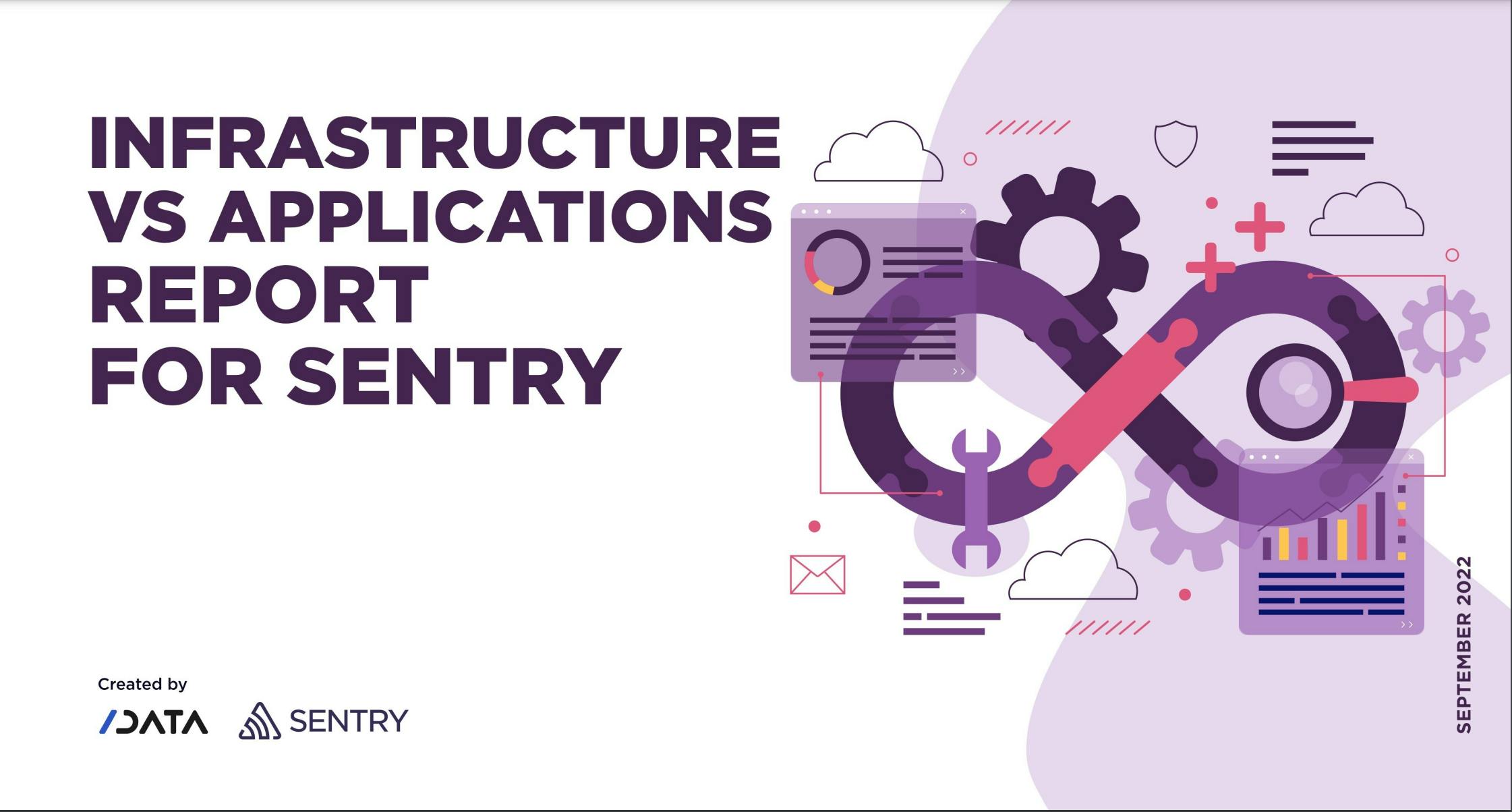
October 09, 2022
Infrastructure vs Applications Report for Sentry
In this report, we provide data and insights from a global survey of 141 Site Reliability Engineers (SREs) and DevOps practitioners commissioned by Sentry and fielded in Q3 2022 by SlashData.
All respondents have SRE or DevOps responsibilities within organisations with more than 50 employees and live software applications in production. SREs and DevOps practitioners play a critical role in software development organisations, ensuring that software systems are ultra-scalable and highly reliable and that updates can be delivered quickly and effectively with low risk or cost of failure.
However, almost two-thirds (62%) of SRE/DevOps practitioners face significant challenges in determining boundaries between ownership of application code and infrastructure and in managing blurred SRE/DevOps and developer responsibilities.
Around half (52%) of SRE/DevOps practitioners currently work in organisations with a culture of developers managing the performance of code that they build, both to create clearer ownership boundaries and to enable SRE and DevOps practitioners to focus more on proactive work to manage and scale infrastructure. We expect to see this kind of decentralisation becoming even more common in future.
While SRE requires a significant focus on ensuring the continuous operation of infrastructure, many who specialise in this role find themselves balancing other responsibilities. We show that SRE and DevOps practitioners spend more time resolving application code issues compared to infrastructure issues, and that the top activity they’d like to spend less time doing is chasing down others to resolve them.
Being proactive is a key goal for most respondents, with the majority indicating that they would like to spend more time proactively analysing/fixing vulnerabilities in software infrastructure.
In chapter 2 of this report, we look at which activities SRE/DevOps practitioners are spending most of their time on, as well as which activities they would like to spend more or less time on to improve the effectiveness of SRE and DevOps within their organisation.
In chapter 3, we explore the cultures that exist in terms of ownership and management of performance, the autonomy of development teams to decide their tooling, as well as the KPIs that SRE/DevOps teams are currently using to manage software performance.
Finally, in chapter 4, we present the current impact of application issues and infrastructure outages in terms of costs and damages incurred and loss of productivity.
Contact us
Swan Buildings (1st floor)20 Swan StreetManchester, M4 5JW+441612400603community@developernation.net